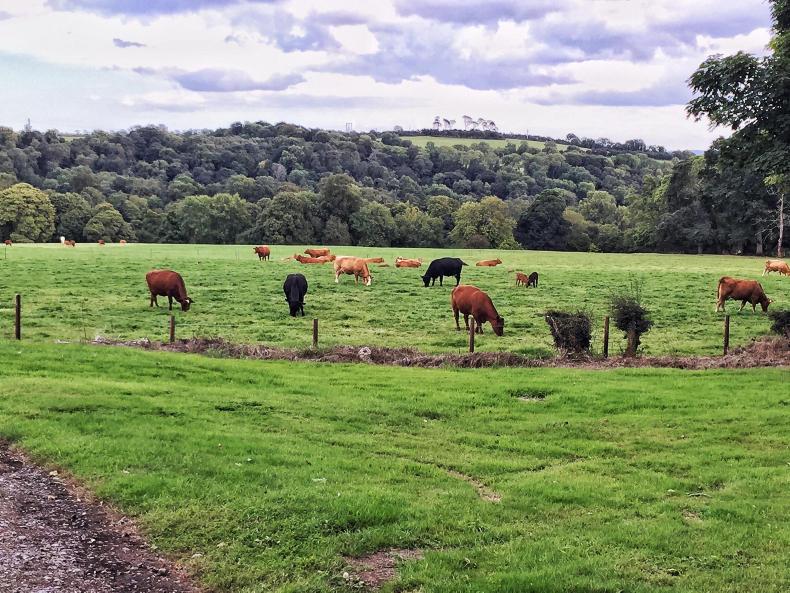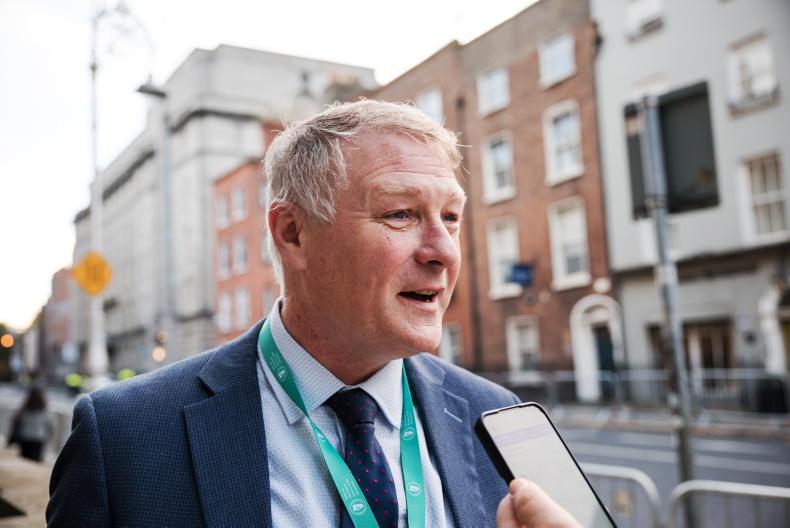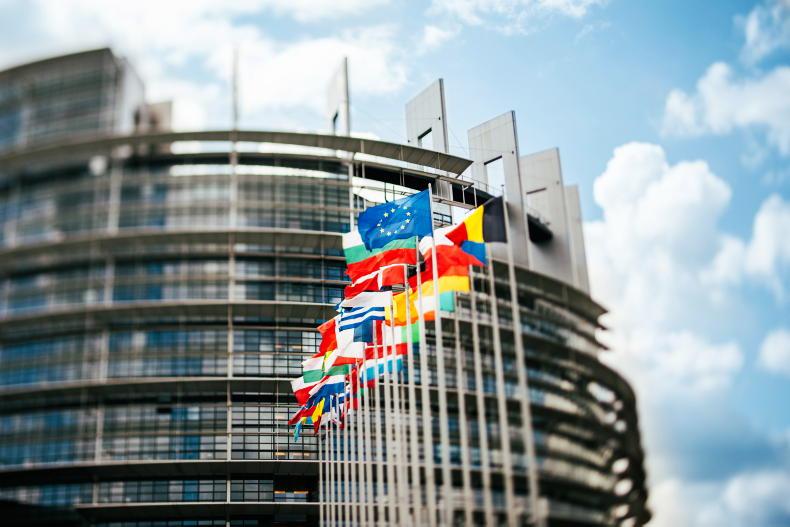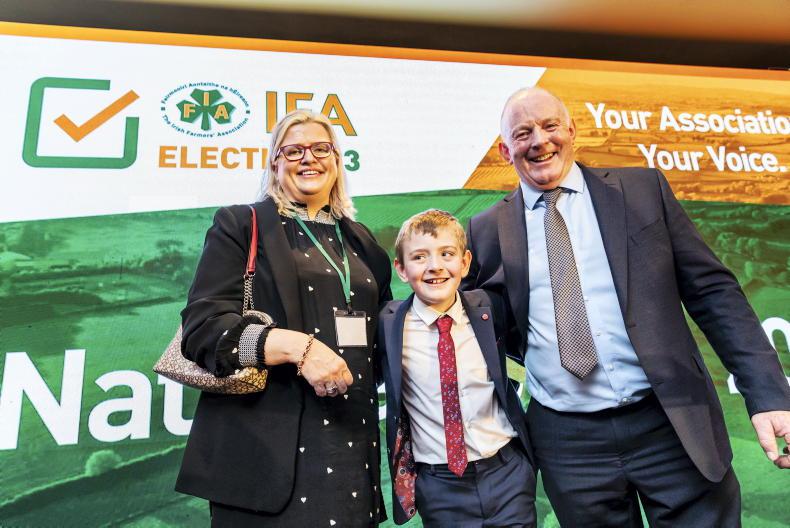The EU Farm to Fork (F2F) strategy has set an ambitious target for 25% of EU production to be organic by 2030.
Speaking in Thursday’s Irish Farmers Journal webinar, recently appointed Director General (DG) of Agri Wolfgang Burtscher pointed out that while Ireland may have just 2% of its production as organic, it was already at 25% in Austria, his home country.
Irish market too small for organic expansion
This comparison goes a long way to explain why organic production seems to prosper in one country but not in another and the reason is strikingly simple.
Austria imports as much agricultural food produce as it exports - $15.5bn (€13.7bn) of imports compared with $15.3bn (€13.5bn) of exports, according to USDA/FAS in 2018. It has a strong economy and a relatively wealthy country whose population have a strong interest in organic food.
Ireland is also a relatively wealthy country, but across all agricultural produce, the domestic market consumes only 10% of total production. That means that 90% is traded into export markets and put bluntly there isn’t the demand for Irish farmers and food producers to forsake the loss of production in return for higher prices on a large scale.
Even where there is organic production, in some categories the produce is sold into the mainstream market, peak season milk being a typical example.
Market not sufficient driver
It is clear that the market alone isn’t a sufficient driver of organic production in Ireland, nor is it likely to be in the foreseeable future.
However, what can effect real change is a combination of carrot and stick in a future national plan constructed by the Government to deliver the next CAP and F2F strategy in Ireland.
In the mid 1980s, dairy production was capped with the introduction of milk quotas and production remained the same until their removal in 2015.
On the other hand, with the support provided for beef production, suckler cow numbers increased three-fold between the mid-1980s and 1998, when they levelled off. Decline set in with the end of coupled payments in 2005.
The financial penalising of additional dairy production, combined with the support for beef production, resulted in rapid development of the Irish beef industry in the late 20th century.
This was reversed by the move to area-based payments by the EU since 2005 and hastened by the lifting of milk quotas in 2015.
Incentivising organic
The market alone will not drive organic production in Ireland, but support funding could. If it is supported generously by the EU, then it would lead to an increase in production, with the product entering the consumer market at close to the price of conventional produce.
Farmers instinctively aspire to increasing production, not introducing measures that curb output, as organic does. However, if there are increased restrictions on the use of pesticides, veterinary medicines and fertiliser, as F2F suggests, then it may become an option.
Farmers who have traditionally used low inputs in extensive systems may be persuaded to take the extra step into organic.
The market alone will not drive an increase in production, but a support payment could. It could also be associated with a capping of production from livestock, which would happen automatically if land was less productive in the absence of fertiliser and pesticides.
Read more
New REPS scheme on the cards
Almost half of farmers expect climate change policies will hurt their business
The EU Farm to Fork (F2F) strategy has set an ambitious target for 25% of EU production to be organic by 2030.
Speaking in Thursday’s Irish Farmers Journal webinar, recently appointed Director General (DG) of Agri Wolfgang Burtscher pointed out that while Ireland may have just 2% of its production as organic, it was already at 25% in Austria, his home country.
Irish market too small for organic expansion
This comparison goes a long way to explain why organic production seems to prosper in one country but not in another and the reason is strikingly simple.
Austria imports as much agricultural food produce as it exports - $15.5bn (€13.7bn) of imports compared with $15.3bn (€13.5bn) of exports, according to USDA/FAS in 2018. It has a strong economy and a relatively wealthy country whose population have a strong interest in organic food.
Ireland is also a relatively wealthy country, but across all agricultural produce, the domestic market consumes only 10% of total production. That means that 90% is traded into export markets and put bluntly there isn’t the demand for Irish farmers and food producers to forsake the loss of production in return for higher prices on a large scale.
Even where there is organic production, in some categories the produce is sold into the mainstream market, peak season milk being a typical example.
Market not sufficient driver
It is clear that the market alone isn’t a sufficient driver of organic production in Ireland, nor is it likely to be in the foreseeable future.
However, what can effect real change is a combination of carrot and stick in a future national plan constructed by the Government to deliver the next CAP and F2F strategy in Ireland.
In the mid 1980s, dairy production was capped with the introduction of milk quotas and production remained the same until their removal in 2015.
On the other hand, with the support provided for beef production, suckler cow numbers increased three-fold between the mid-1980s and 1998, when they levelled off. Decline set in with the end of coupled payments in 2005.
The financial penalising of additional dairy production, combined with the support for beef production, resulted in rapid development of the Irish beef industry in the late 20th century.
This was reversed by the move to area-based payments by the EU since 2005 and hastened by the lifting of milk quotas in 2015.
Incentivising organic
The market alone will not drive organic production in Ireland, but support funding could. If it is supported generously by the EU, then it would lead to an increase in production, with the product entering the consumer market at close to the price of conventional produce.
Farmers instinctively aspire to increasing production, not introducing measures that curb output, as organic does. However, if there are increased restrictions on the use of pesticides, veterinary medicines and fertiliser, as F2F suggests, then it may become an option.
Farmers who have traditionally used low inputs in extensive systems may be persuaded to take the extra step into organic.
The market alone will not drive an increase in production, but a support payment could. It could also be associated with a capping of production from livestock, which would happen automatically if land was less productive in the absence of fertiliser and pesticides.
Read more
New REPS scheme on the cards
Almost half of farmers expect climate change policies will hurt their business









SHARING OPTIONS